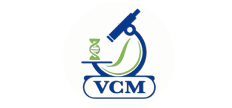Đào tạo & nghiên cứu
The Burden of Beta-Lactamase, Carbapenemase and Colistin-Resistance Producing Genes in E. coli and K. pneumonia Strains
H.T.Pham[1]*, T.K.T.Le[1,2], Q.V.Nguyen[1,2], D.K.Tran[1,2], T.H.T.Nguyen[1,2], Q.D.Ha[1,2], A.H.Pham[1,2], V.H.Pham[1,3]
[1] Vietnam Research and Development Institute of Clinical Microbiolgy, Vietnam
[2] Nam Khoa Biotek Co. Ltd., Vietnam
[3] Phan Chau Trinh University, Vietnam
Background
Gram-negative rods, including E. coli and K. pneumoniae, are displaying an escalating resistance to beta-lactam antibiotics through AmpC, ESBL and carbapenemase mechanisms. The development of colistin resistance, mediated by mobile colistin resistance (MCR) genes, with the risk of spreading within Gram-negative bacteria, poses huge challenges for treatment and antibiotic use management. In the context of Vietnam, where accurate data on antibiotic resistance genes is crucial for targeted treatment strategies, there remains a scarcity of studies addressing this issue.
Aim of the study
This study aims to detect specific genes responsible for beta-lactamase, carbapenemase, and colistin resistance in E. coli and K. pneumoniae strains using Multiplex real-time PCR (MLP rPCR) and investigate the burden of antibiotic genes in clinical settings.
Materials and methods
Samples consisted of E. coli and K. pneumoniae strains isolated from routine diagnostic specimens from various healthcare facilitiesin Ho Chi Minh city to our laboratory from 2021 to 2023. DNA was extracted using the boiling method, followed by MLP rPCR to identify antibiotic resistance genes (AmpC, ESBL, carbapenemase and MCR) and subsequent analysis of the results.
Results and discussion
We gathered a total of 299 K. pneumoniae and 301 E. coli samples. AmpC genes (ABC, DHA, ACC, CIT, and MOX) were identified, with 65.55% (196/299) of K. pneumoniae carrying AmpC genes, mainly DHA (94.39%), and 48.49% (145/301) prevalence in E. coli, predominantly DHA (97.24%). ESBL genes (TEM and/or SHV, CTX-M, and CMY) were also detected. Among K. pneumoniaesamples, 68.09% (206/299) exhibited ESBL genes, 95.15% of which carrying TEM and/or SHV, and 95.63% containing CTX-M. In E. coli, 68.23% displayed ESBL genes, 46.57% of which containing TEM and/or SHV and 98.04% having CTX-M genes. Samples with TEM and/or SHV are considered meaningful only when exhibiting an ESBL phenotype on antibiotic susceptibility testing. Notably, 56.53% of AmpC-producing K. pneumoniae and 37.93% of E. coli strains with ESBL genes pose a threat to fourth-generation cephalosporin use. Carbapenemase-producing genes (OXA-48, NDM1 and KPC) were detected in 142/299 samples (47.49%) of K. pneumoniae strains and 24/301 samples (8.03%) of E. coli strains. Detection rates of these genes in carbapenemase-producing K. pneumoniae were 73.94%, 57.75% and 15.49%, respectively. Among carbapenem-resistant E. coli strains, 83.33% contained OXA-48, 25% contained NDM1 and KPC was not detected. The high detection rate of NDM1 highlights a notable threat to the use of ceftazidime-avibactam. Emerging MCR genes were identified in 11 K. pneumoniae and 5 E. coli samples.
Conclusion
Antibiotic resistance genes in Gram-negative rods threatens commonly used antibiotic treatments, necessitating a comprehensive study and a fast, robust and economical detection method. This study provides valuable insights into these issues and suggests MLP rPCR as an ideal and accessible technique for laboratories in low to middle-income countries.
Keyword: AmpC genes, ESBL genes, carbapenemase genes, MCR genes


